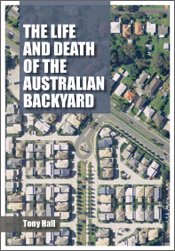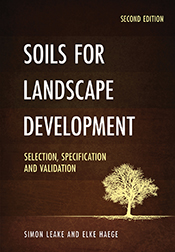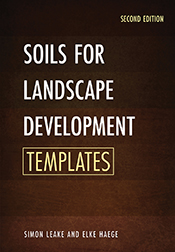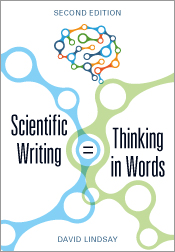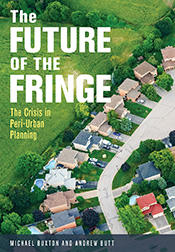The Life and Death of the Australian Backyard
By: Tony Hall
Examines the disappearance of the traditional, substantial Australian backyard.
A substantial backyard has long been considered an iconic feature of the Australian suburb. Nevertheless, during the 1990s, a dramatic change occurred: substantial backyards largely disappeared from new suburban houses in Australia. + Full description
Whatever the size of lot, the dwelling now covers most of its developable area. Although the planning system does not actually promote this change, it does little to prevent it. It appears to be a physical expression of the way that Australian lifestyles are changing for the worse, in particular longer working hours. This in turn raises issues about health and wellbeing, especially for children.
Vegetation surrounding the dwelling plays an important role in microclimate, storm drainage and biodiversity, irrespective of whether the residents use their backyard. Its loss has serious ecological implications, a deficit rendered permanent by the changes to the housing stock.
The Life and Death of the Australian Backyard is based on a detailed quantitative study of this increasing, but previously unstudied, problem. It discusses the nature, uses and meaning of the traditional backyard, presents an understanding of the changes that have been happening and suggests possible remedies. All professionals working in the landscape and development industries, local government, consultancies and in universities should read this unique study of an issue of increasing significance to urban sustainability.
- Short descriptionNews
Winner of the 2012 National Award for Planning Excellence (Cutting Edge Research and Teaching).
The Life and Death of the Australian Backyard is based on a detailed quantitative study of this increasing, but previously unstudied, problem. It discusses the nature, uses and meaning of the traditional backyard, presents an understanding of the changes that have been happening and suggests possible remedies. All professionals working in the landscape and development industries, local government, consultancies and in universities should read this unique study of an issue of increasing significance to urban sustainability.
Reviews
"It is a well-researched and articulate advocacy by a planning professional intended to set public debate going."
Warrick Mayne-Wilson, Historic Environment, Volume 24, No 1, pp. 55-56
"This thought-provoking book should be read by all professional planners and developers. It is an important reference for planning and environmental students. Finally, the implications of a generation of Australian children growing up without a backyard extend well beyond the planning sphere – this book will be used across many academic disciplines."
John Todd, Australasian Journal of Environmental Management, Vol 19 (2), pp. 135-136, June 2012
"Hall’s book may be a turning point in our understanding of what is happening in our own backyard. Examining what to some may appear a quirky topic more suited to eccentricity; Hall presents a statistical and illustrated delight to demonstrate his findings. Hall’s book deserves to be widely read and anyone reflecting on how our society is changing should ensure that they consider the life and death of the Australian backyard."
Trevor Budge, Geographical Research 2012, Institute of Australian Geographers, pp. 220-221
"The Life and Death of the Australian Backyard is a useful and stimulating contribution to both planning and design, and the field of suburban history. Hall’s study of Australia’s shrinking backyards is a timely reminder of, and a reflection on, the changing Australian way of life at the turn of the twenty-first century."
Ruth Morgan, The University of Western Australia
"Tony Hall’s book is an important contribution to the debate on urban form and the need to
consider urban form in planning for urban futures. The book is not only important in its
contribution but is superbly well presented and is engaging and readable. Each chapter is illustrated
with excellent diagrams and photographs, supplemented by a section that includes
fascinating colour aerial views of housing developments. I would recommend this book. It highlights important issues. The general reader as well as the planner and urban specialist would find much to engage them in the book."
Claire Freeman, Urban Policy and Research, Vol 29, No 1, p. 91–102, March 2011
"Although this book takes a somewhat academic viewpoint, the arresting material offers something for every reader interested in why these changes are happening, and what we can do to preserve the important microclimates and habitats for biodiversity that are quite literally in our own backyards."
Sanctuary, March 2011
"This book is concisely written, clearly illustrated and extremely well researched. While I consider that
its primary market is likely to be professional, comprising architects, planners, developers, engineers and surveyors, I note that Hall was recently interviewed by Allan Saunders "By Design". Hopefully, there will be a wider dissemination and appreciation of the importance of Hall's conclusions, beyond the housing experts into areas of public health and social need."
Rodney Jensen, Cityscape Creative Cities, Vol 42 October 2010
Details
ePDF | August 2010ISBN: 9780643098176
Publisher: CSIRO Publishing
Available from eRetailers
ePUB | August 2010
ISBN: 9780643102071
Publisher: CSIRO Publishing
Available from eRetailers
Features
The death of the Australian backyard:- has serious ecological implications, notably for biodiversity, microclimate and drainage
- is a physical expression of the way that Australian lifestyles are changing
- raises issues about health and wellbeing, especially for children.
Contents
Preface and acknowledgementsIntroduction
Chapter 1 The origins, form and function of the backyard
Chapter 2 The meaning of the backyard
Chapter 3 The death of the backyard
Chapter 4 Why is the backyard shrinking?
Chapter 5 Why does the planning system not prevent the shrinkage?
Colour plates
Chapter 6 What should be done to preserve the backyard?
Conclusion
References
Index

